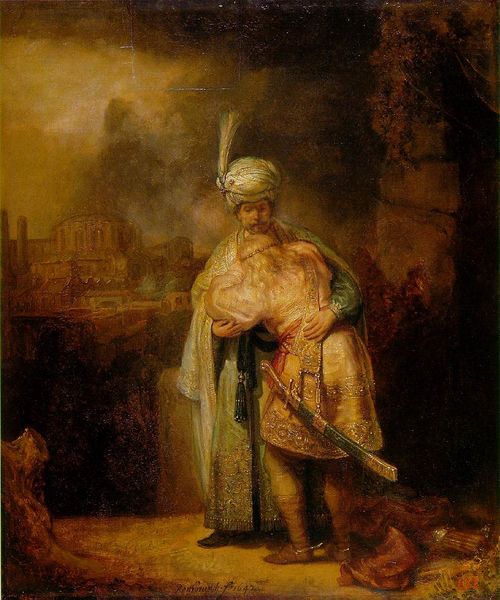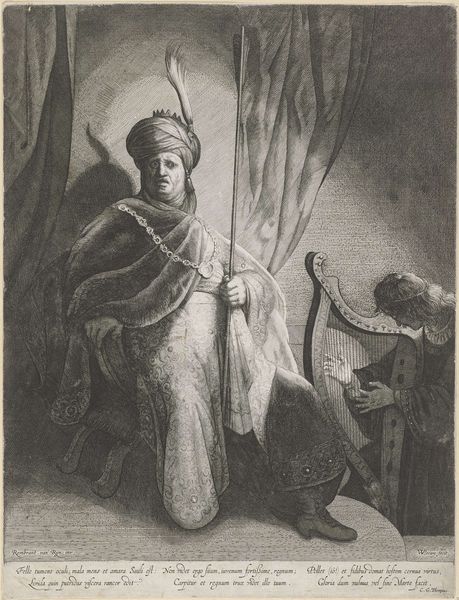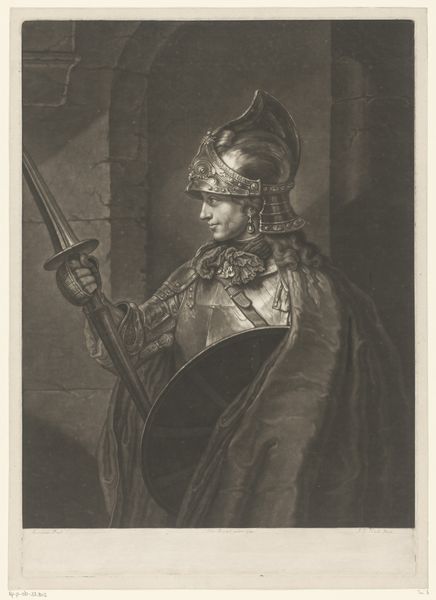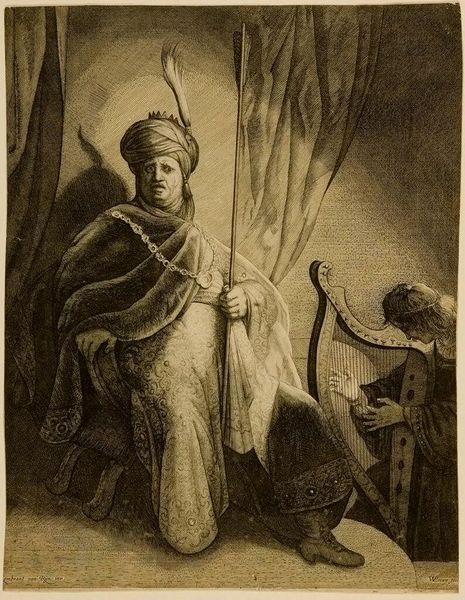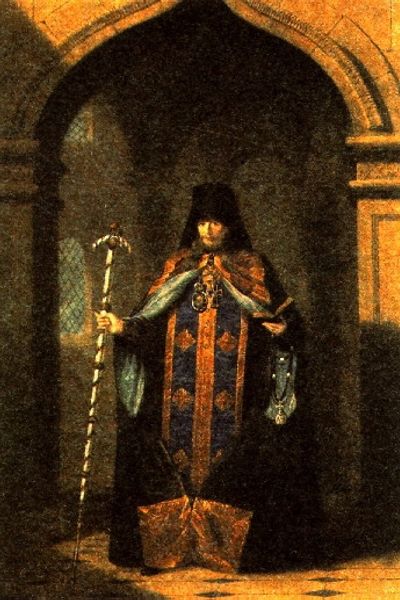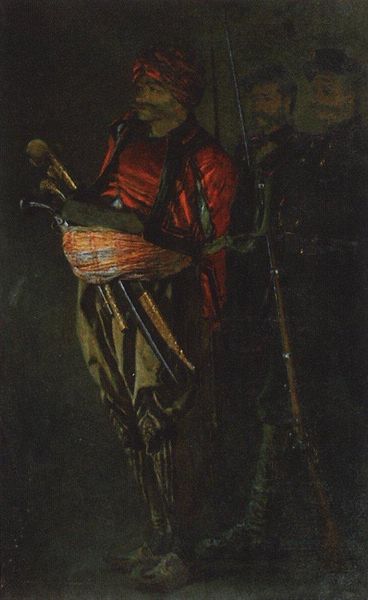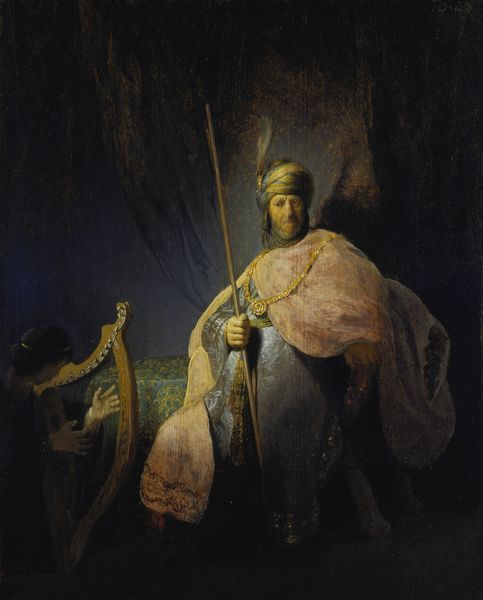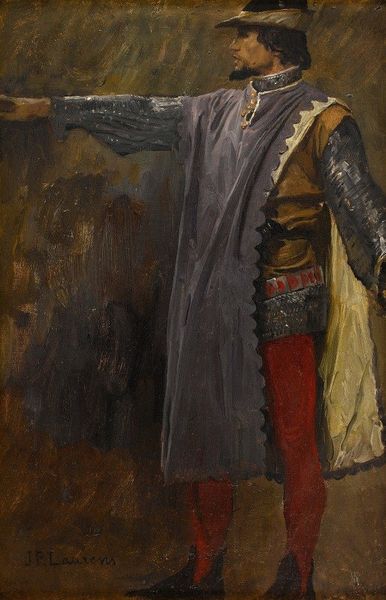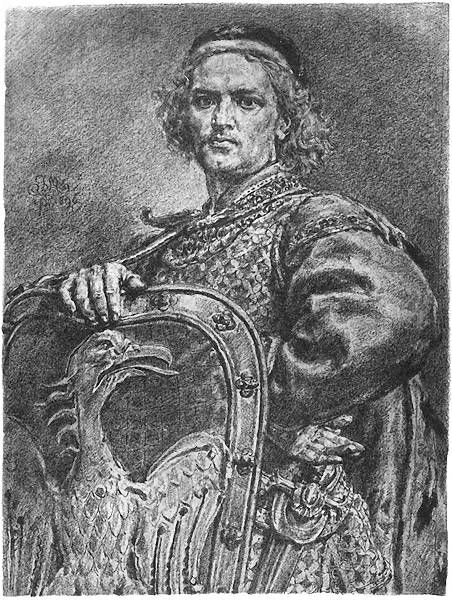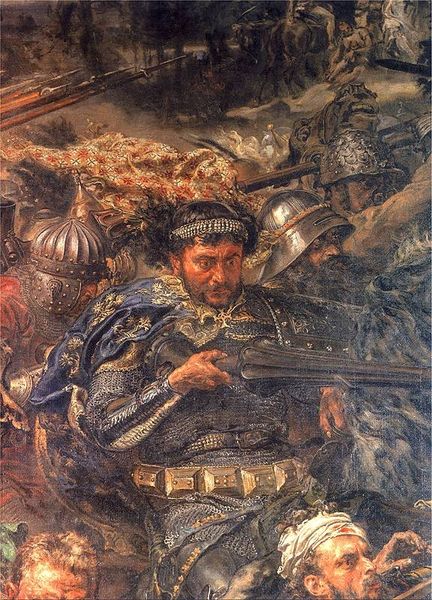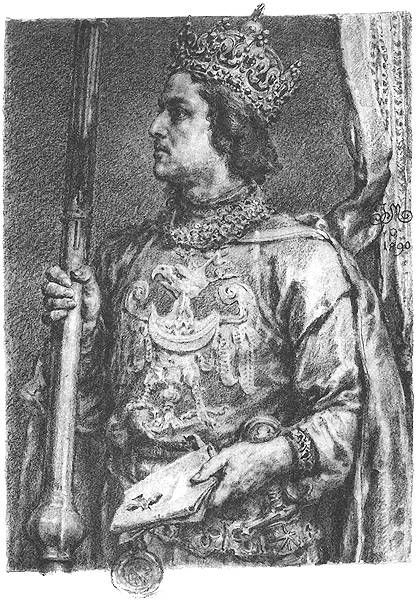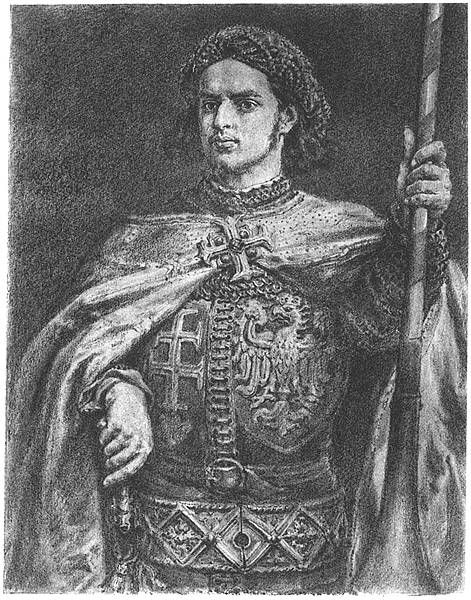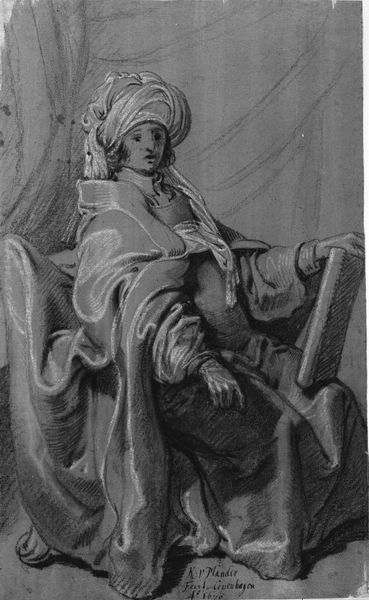
painting, oil-paint
#
portrait
#
baroque
#
dutch-golden-age
#
painting
#
oil-paint
#
figuration
#
oil painting
#
history-painting
#
realism
Dimensions: 104.5 x 137.5 cm
Copyright: Public domain
Curator: Looking at Rembrandt van Rijn's "A Man in Armour" from 1655, I’m immediately struck by its contemplative stillness. He seems caught in thought rather than poised for battle. What catches your eye? Editor: The texture, without a doubt. Notice how the oil paint is built up, particularly on the armor itself. I am wondering if Rembrandt sought to capture not just the image but the feeling of metal, its weight and coolness. Curator: It’s interesting you mention feeling. For me, this portrait raises questions about masculinity and power. Is Rembrandt exploring the idea of the heroic warrior or is he looking beyond the surface? The sitter almost appears weary, weighed down, dare I say, by his own armor. It would be good to explore the history of this subject matter during that era and perhaps in Dutch society. Editor: I agree, and from a materialist viewpoint, it's essential to understand the economics behind the production of such elaborate armor. Who was commissioning it and how did this influence Rembrandt’s depiction? There's a whole system of craftspeople involved in producing these materials that reflects wealth and societal structure. Curator: And that brings up class, gender, and cultural norms as a system. It begs us to consider issues surrounding societal roles for men and what happens if those are challenged or subverted, in Rembrandt’s time and in our own time, too. Was he commenting on the militaristic ambitions of the time, a wariness perhaps after the close of the Eighty Years' War only seven years earlier? Editor: Perhaps the creation of the work was in response to those shifts. Considering that Rembrandt did not travel abroad often, how did he access information about warfare, current styles and military practices? Curator: Indeed. It feels like Rembrandt’s art isn't just reflecting reality but also actively engaging with the social dialogues of his time. Editor: Exactly. He’s a craftsman using paint to engage with culture. Examining how it’s made is crucial to decoding the cultural message. Curator: Analyzing the painting today reminds us how many layers, both physical and theoretical, contribute to our experience of a work. It becomes a fascinating dialogue across centuries. Editor: Absolutely, and appreciating that conversation requires a material and intellectual openness to new discoveries.
Comments
No comments
Be the first to comment and join the conversation on the ultimate creative platform.
